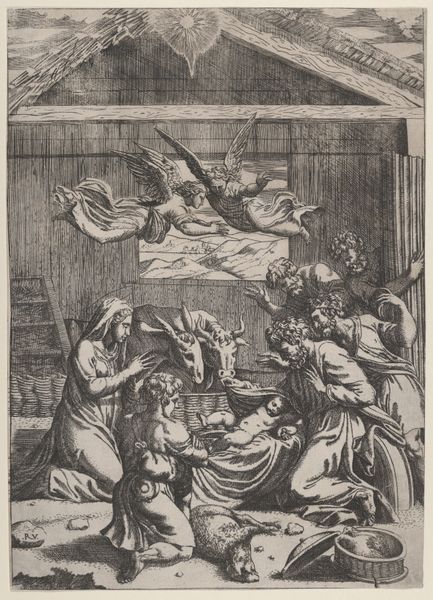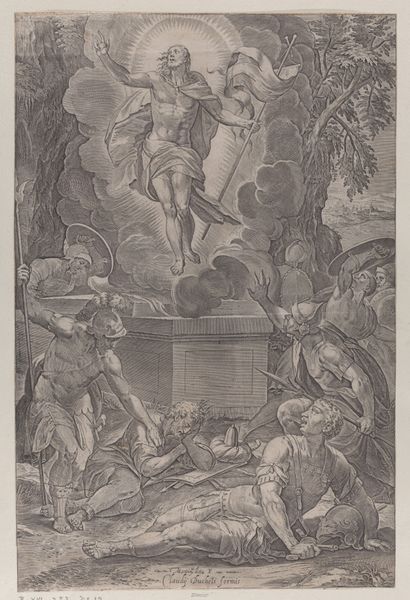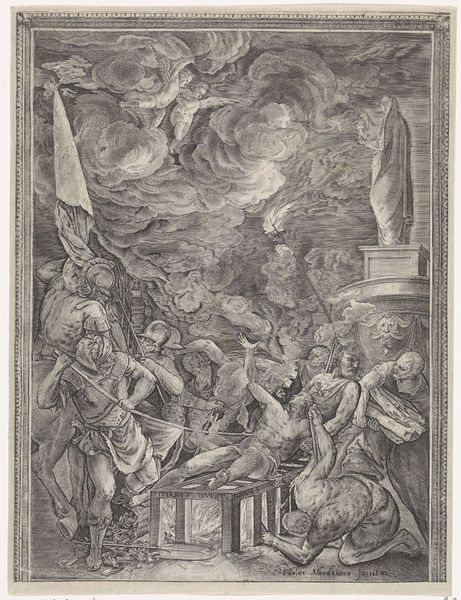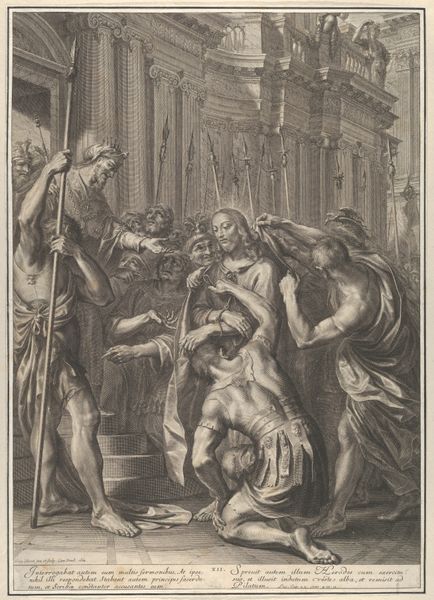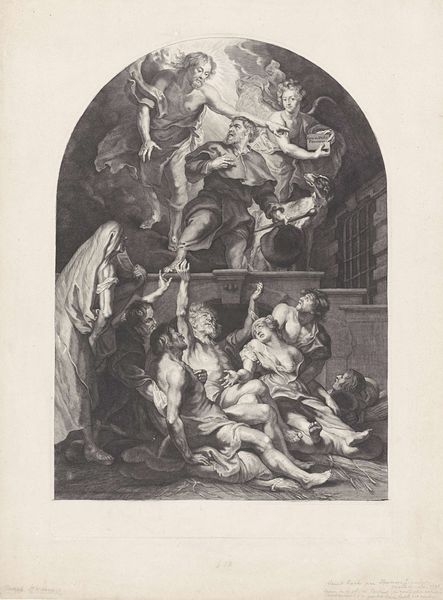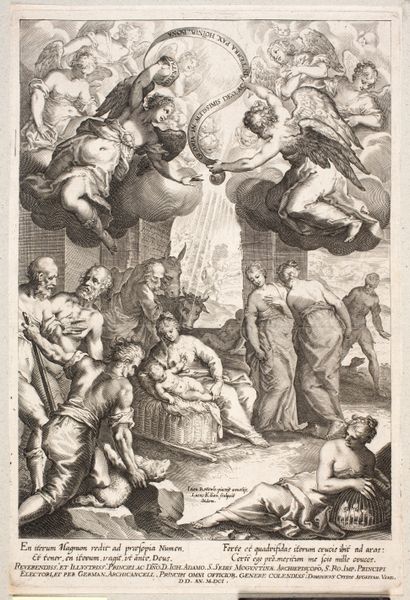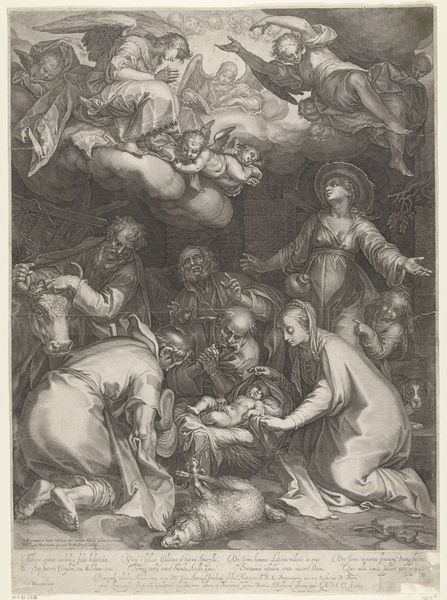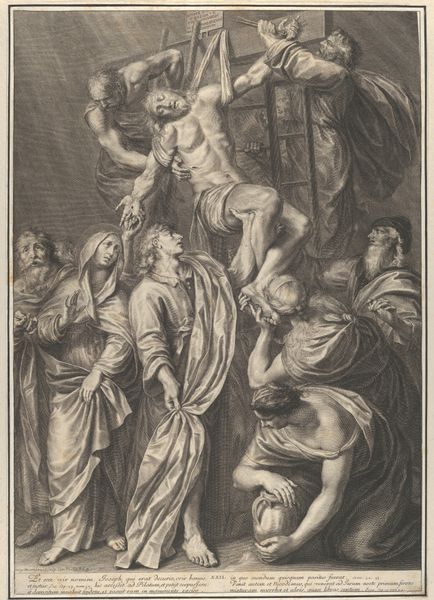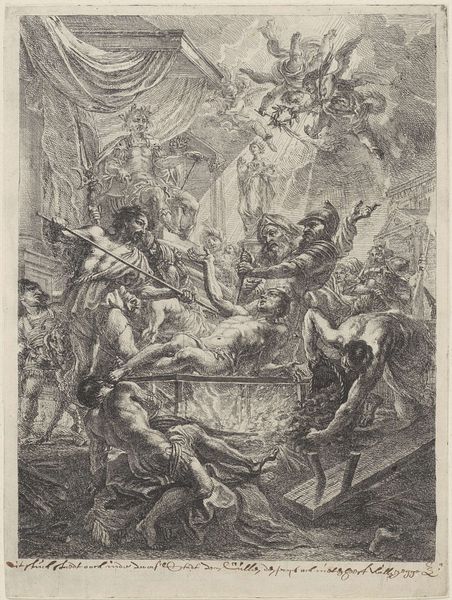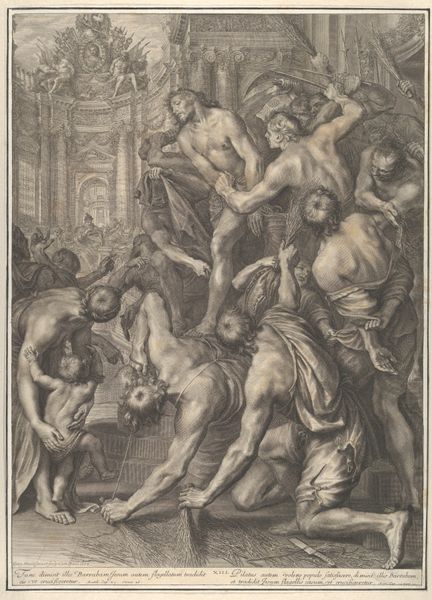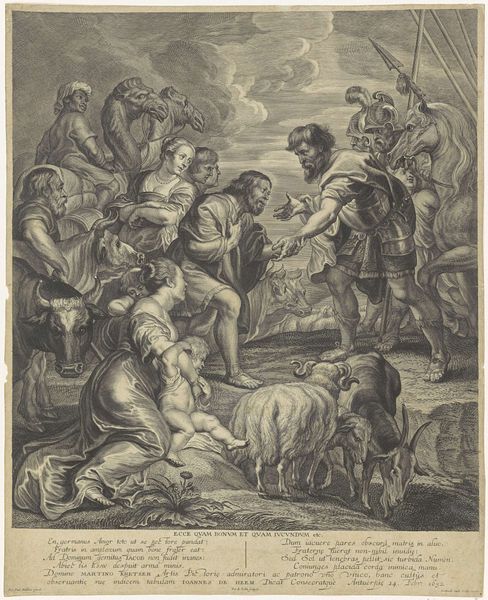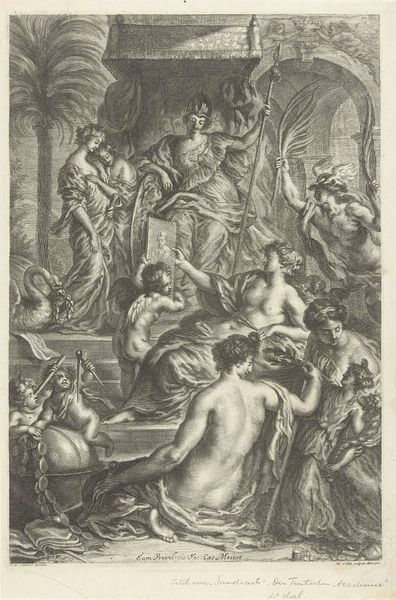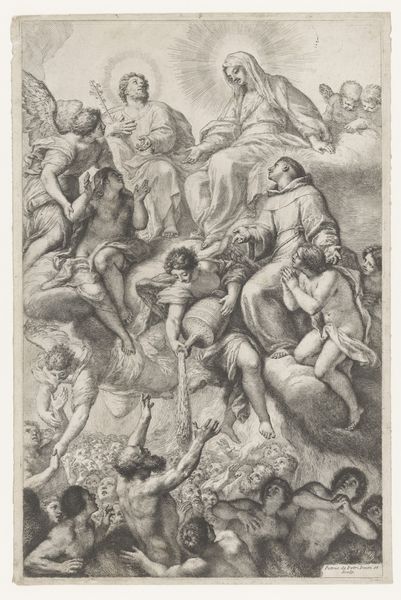
drawing, print, engraving
#
drawing
#
baroque
# print
#
figuration
#
men
#
history-painting
#
engraving
Dimensions: Sheet: 9 5/8 × 5 9/16 in. (24.4 × 14.2 cm)
Copyright: Public Domain
Curator: Look at this intriguing 18th-century engraving, "Saint Roch," part of the Metropolitan Museum of Art's collection. It's rendered with meticulous detail. What are your initial thoughts? Editor: Overwhelming, yet balanced. There's a clear hierarchy, from the divine figures above to the suffering masses below. The textures create a somber, ethereal quality, almost like a fever dream. Curator: That's insightful. The use of engraving, a labor-intensive process involving carving into a metal plate, suggests a devotional quality to the image production. Prints like these allowed wider access to religious imagery, functioning as tools for disseminating beliefs and consolidating communal identity. Editor: Yes, but look at how the composition directs the eye upward. The artist employs linear perspective, contrasting dark and light to emphasize the saint and Christ, making them focal points within the visual narrative. Curator: Absolutely, the deliberate arrangement also signals a very specific societal understanding of how labor can redeem suffering through piety, reflecting the social and economic precarity of the time and framing the saint's actions within a larger religious and ethical framework. The engraving style allowed for mass reproduction, and each print made the artist reliant on materials that changed across location and social class. Editor: True, and those details are also important from a purely art historical standpoint: observe the musculature on display, typical of the Baroque interest in movement and drama. Note the angel's precise gestures and its billowing drapery—visual cues create a sense of spectacle. Curator: Engravings of this nature typically required collaboration; artists relied on printmakers to reproduce their work. In effect, workshops arose around the needs of the print market, transforming religious art into a manufactured item for consumption. Editor: I can’t deny its material context. But look at the dynamism and drama captured through simple contrasts. These patterns make up the visual order the piece expresses in a complex religious sentiment. Curator: Ultimately, whether divine intervention or a commentary on the distribution of labor, the Saint Roch print serves as an intriguing relic of belief and skill. Editor: Indeed, it showcases the technical prowess involved in translating artistic vision, no matter what kind, into reproducible form, opening avenues for discourse and analysis across generations.
Comments
No comments
Be the first to comment and join the conversation on the ultimate creative platform.
